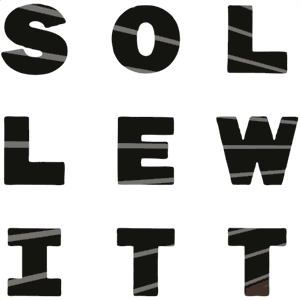Despite his success and being one of the most influential artists of the 20th century, Sol LeWitt didn't want to become an art personality, refused prices, didn't want his picture to be taken and hardly ever gave interviews. The film SOL LEWITT, directed by Chris Teerink, is not a biography, the work itself is the point of departure. The beauty of his work raises the question where the conceptual principles end, and where the quest for beauty begins. 'Conceptual artists leap to conclusions, logic cannot reach', we hear LeWitt say in a rare audio-interview from 1974. 'I really believe that art is not something that's laid down as frosting on the cake of society. I think that aesthetics and ethics are really very much the same kind of thing'.
Sol LeWitt's wall drawings could be described as obsession pushed to the limit of paradox and absurdity: an often simple idea leading to an overwhelming visual and intellectual beauty. Theoretically they can be made by anyone, anywhere. As John Hogan, one of LeWitt's long time assistants, says in the film: “If you had a fax machine, and you had a wall, you could have the drawing”. The idea, or concept is the actual work. Sometimes his wall drawings are like a visual explosion of pulsating colors, sometime they consist of thousands of pencil lines or scribbles. Wall drawing #801 'Spiral', installed in Maastricht in 2011 (4 years after the death of the artist), is a simple concept: a white line spirals down the black wall of a cupola, 5.2 kilometers long. A team of 8 assistants work 30 days to install it. When the painstaking work is done and the scaffolding taken away, the result is intense. What we see in the film is a complete transformation of space by a simple idea.
In Massachusetts, an exhibition of more than a hundred of LeWitt's wall drawings, installed in a show that will last 25 years, offers a rare opportunity to see his very early work together with the very last. In Italy we find the real genesis of his work: pencil wall drawings LeWitt made himself in a 16th century tower in the hill town of Spoleto, where he lived for several years. An old Italian carpenter tells how he made dozens of sculptures for LeWitt, showing us all the card board models he has kept over the years. Fighting back the tears he shows us his biggest treasure: a rare snap shot of him and Sol. It's the only glimpse of LeWitt himself. Although the work of Sol is the true protagonist, the film also focuses on the origin of the lifelong relationship Sol built with Holland and some of the sources of inspiration, he found in Italy.
The AVRO will be broadcasting Sol LeWitt in a 52 minute version in 2013.
